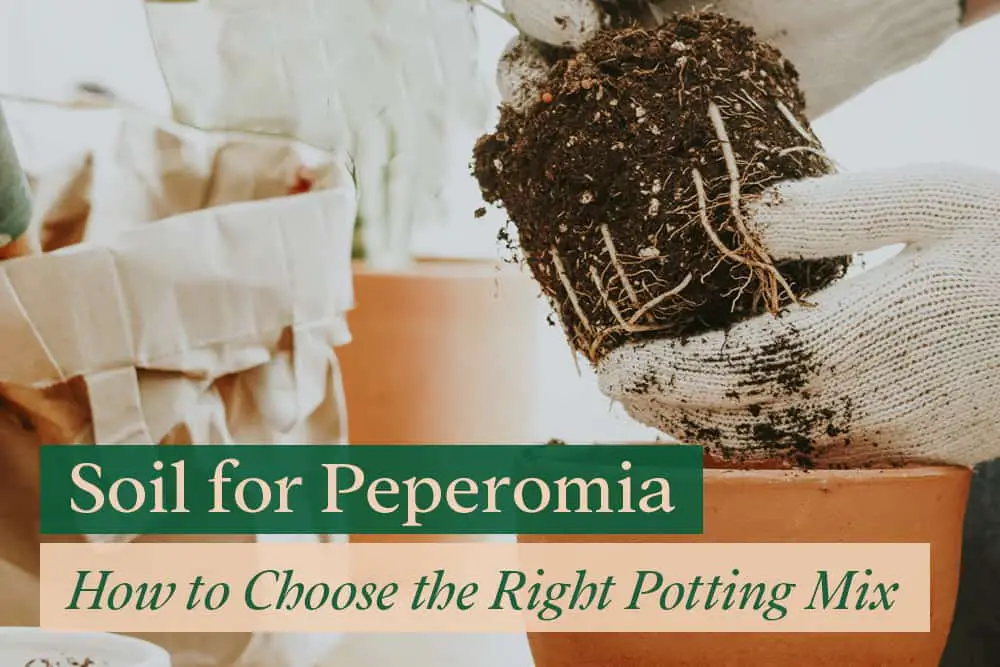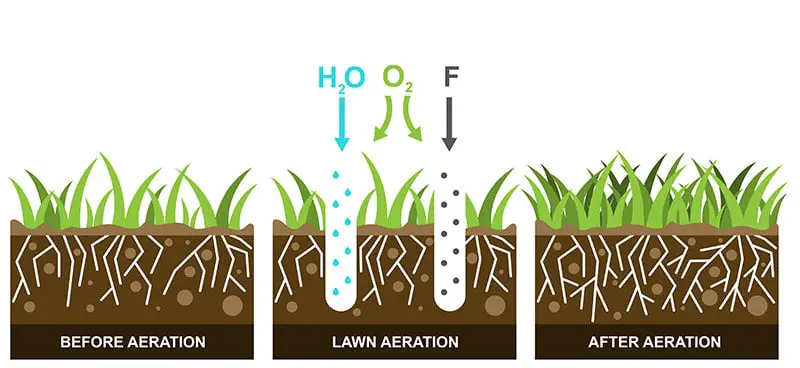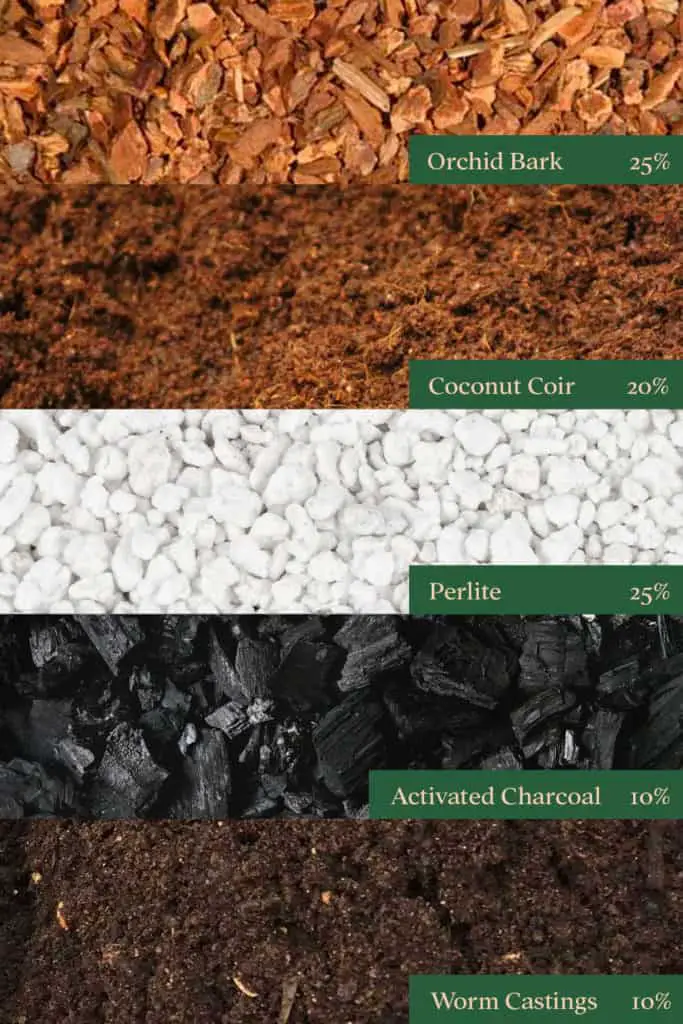
Does your Peperomia seem unhappy with its current soil mix? Is there a preferred type of soil for Peperomia?
In general, Peperomia thrives in aerated, well-draining soil. You can purchase a pre-made potting mix or make your own with orchid bark, coconut coir, perlite, activated charcoal, and worm casting. The ingredients ratio may vary depending on temperature and watering routine.
This article will cover everything you need to know about growing Peperomia plants in the proper soil in this post:
- Signs you are using the wrong soil mix
- Ideal potting mix qualities for Peperomia
- Best ready-made potting mix for Peperomia
- How to create your own soil mix for Peperomia (+recipe)
- Factors affecting your potting mix’s ingredient selection
Let’s get started!
Bloomsprouts may earn an affiliate commission if you purchase something through recommended links.
Signs You are Using the Wrong Soil Mix
Your Peperomia plant will let you know if you’re using the wrong soil mix.
Although plants can’t talk, they often have dramatic reactions if they’re unhappy, and the results are hard to ignore.
Here are some signs that you may not be using the right mix for your Peperomia plant:
Soil is dense and compact.
Dense, compacted soil has less room for water to flow, obtain oxygen, and allow roots to grow.
As water cannot flow easily from the soil, it will build up at the root zone of your Peperomia and suffocating the roots, which leads to root rot.
The best way to test soil compaction is by probing the soil with a stick to the bottom of the pot. The stick should easily slide straight through the soil. If the stick cannot pass through, or if it meets heavy resistance, your soil is too compacted.
Also read: The Benefits of Growing Peperomia in Water
Soil not drying out
Has it been more than two weeks since you watered your Peperomia, yet the soil is still wet? If your soil does not dry out on its own, there is a problem!
Waterlogged soil creates a perfect anaerobic environment for root rot to thrive, ultimately killing the plant.
Insert your finger into the soil to determine how wet it is. If dirt sticks to your finger when you remove it, the soil is still moist. You may also use a soil meter to accurately determine how wet the soil is.
Leaves curling and discoloration
The most obvious sign that you’ve used the wrong soil mix is the appearance of the Peperomia leaves.

Drooping and curling Peperomia leaves are an indication that the plant is dehydrated. This might happen when the soil does not retain enough moisture to replace water loss through transpiration.
On the other hand, if your soil is waterlogged, roots will start to rot and die. The leaves will generally turn yellow as the first indication of root death.
Peperomia not growing or wilting
As root rot advances, your Peperomia won’t produce energy for growth since it doesn’t have enough water for photosynthesis.
On top of that, this also means the cells in the stems and leaves lose water pressure that helps them to stay turgid and stand upright.
Soil smells bad
You can tell that your potting soil has a severe root rot when you start smelling a somewhat sulphur odor from it.
The stench is caused by bacteria that thrive in the wet, anaerobic environment.
The plant is Infested with pests & fungus.
Waterlogged soil can subject Peperomias to a variety of diseases caused by pests and fungi.
You can find the fungus gnat thriving in overly moist conditions. They feed on the roots and cause root dieback and rot that will kill your Peperomia in no time.
On top of that, fungi such as Pythium spp. and Phytophthora spp. can also spread rapidly in poorly drained soils and severely damage roots and stems.
Peperomia Soil Mix Requirements
By now, you’ll realize that Peperomia may rot and die if grown in unsuitable potting soil.
So, what specific soil requirements does your Peperomia need then?
Aeration

Soil aeration is important because it allows the plant’s roots to consume CO2 and release oxygen. When the aeration is poor in your soil, the soil can become condensed, water-logged, and prone to insects and fungal diseases.
There are several ways to aerate your Peperomia’s soil. The most invasive involves removing the plant from the pot and breaking up the soil by hand.
At this point, if you are not entirely replacing the soil, you can add aerating additives such as perlite. Perlite is a light, volcanic rock that improves drainage and aeration.
If you don’t want to interrupt your Peperomia due to poor health or the wrong time of year for re-potting, you can aerate the soil by using a chopstick or other thin instrument to puncture holes carefully in the soil.
No need to worry about damaging roots; poorly aerated soil will do more damage than poking holes!
Well-Draining
Peperomia requires well-draining soil for its roots to absorb all the water it needs yet dries out completely between watering. It also aids in absorbing oxygen into the root system and helps prevent root rot due to overwatering.
A well-draining potting mix contains perlite, bark and coarse sand. You can make this mixture yourself or buy a pre-packaged mix in the store.
You may want to take a look at the pot, as well. Pots with drainage holes in the bottom are the best option for plants like Peperomia that don’t like to stay moist.
Moisture Retention
Some plants genuinely do love soil that retains moisture, but that isn’t true of the Peperomia. They are tropical perennials well-loved for their ornamental foliage, and therefore, they don’t do great in continually wet soil.
You may want to consider soil mixes that are often used for succulents and cactus, as they drain well and don’t retain moisture.
pH Level
Soils can be classified by their pH level, ranging from acidic, alkaline, and neutral.
Generally, Peperomias aren’t picky and will live in slightly acidic, slightly alkaline, or neutral soils (pH level 6.0 to 7.0)
If the soil mix is heavily acidic or alkaline, it can have adverse effects on your Peperomia. The plant may grow slowly, the soil may gather bacteria, or nutrients may leach so that plants can’t get adequate nutrition.
High levels of lime in the soil will cause a high pH, whereas alkaline soil is usually full of sodium, calcium, and magnesium.
Nutrient Content
Like humans, all plants need nutrients to survive and thrive. Adequate nutrients ensure that a plant can germinate, grow, reproduce, and fight diseases.
Potting soil with a higher proportion of nutrients, such as nitrogen (N), phosphorus (P), potassium (K), and minerals, are beneficial to Peperomia.
The best way to get your plant an adequate amount of nutrients is by fertilizing.
With Peperomias, you need to be careful as they require very little fertilizing. Over-fertilizing will create toxic soil and unbalanced nutrients, leading your immediate health problems with your plant.
Generally, you should feed your Peperomia once a month using well-balanced fertilizer with an NPK (nitrogen, phosphorus, potassium) ratio of 10-10-10.
Best Ready to Buy Soil for Peperomia
Mixing your own soil mix may not be for everyone, especially if you don’t have the time or means to do so. Fortunately, there are great pre-made potting mixes for Peperomia that can save you a lot of work!
When it comes to houseplants, I’ve always used FoxFarm Ocean Forest.
The soil had excellent aeration and drainage, yet it also held onto water effectively. It also set the pH between 6.3 and 6.8 to help the plant better absorb fertilizers.
My biggest issue is the cost of the product. I could create my own soil mix for half the price of what I was paying. But if you don’t mind paying more for convenience, I highly recommend FoxFarm Ocean Forest.
How to Mix Potting Soil for Peperomia (+materials needed)
Fortunately, making your own potting mix is a simple process! You’ll need a few ingredients and proper measurements, but if you do it right, your Peperomia plants will be extremely happy in your home.
Listed below are the materials I used to create a potting soil mix for Peperomia plants:

Orchid Bark (25%)
Bark chips are shredded or chipped tree bark that can be used in the soil. Their coarse texture aerates the soil, resists compaction, and provides drainage.
Coconut Coir (25%)
This coconut-derived organic substance has excellent soil drainage and moisture retention properties. It has a water absorption capacity ten times more than its weight.
Perlite (25%)
With the addition of perlites, you can create a more aerated and well-drained potting mix by changing the substructure of the soil to make it less compact and better draining.
Worm Castings (10%)
Worm casting boosts your soil’s fertility by adding rich nutrients that your plant needs to thrive. It also maintains the soil’s pH between 6 and 7, which is ideal.
Activated Charcoal (5%)
Activated charcoal is a porous form of charcoal that has been treated with gas, heat, or chemicals. It can aid in the repellence of insects and the prevention of mold while also absorbing excess moisture.
Alternative if you can’t find all the ingredients
Although the above ingredients are readily available in the United States, this may not be the case in other countries.
If you are unable to get some of the ingredients, you can substitute the above recipe with the following materials:
Peat moss (30%)
Peat moss is an excellent water-retention material that slowly distributes moisture to plants when they require it. As a plus, it helps Peperomia plants better absorb nutrients by keeping the pH of your soil stable.
Vermiculite (40%)
Similarly to perlite, vermiculite improves soil aeration while simultaneously storing water and minerals for later release.
Potting soil (30%)
You can get potting soil for a reasonable price at your local nursery. However, check whether the potting soil is labelled organic to ensure that it does not contain chemical fertilizers.
How to Mix Potting Soil for Peperomia
There is no fancy step-by-step process needed to mix soil for Peperomia. Simply add all ingredients and stir them together with a gardening spoon or your hands in the proportions listed above.
I recommend doing this in a large bin or bucket since there will be lots of mixing and stirring involved.
Make sure to wear gloves before handling any ingredients, especially the bark chips, as they can be a little rough on your hands. We don’t want any pesky splinters!
Other Factors Which May Affect Ingredient Choice in Your Soil Mix
Temperature & Humidity
If you live in warmer regions, your Peperomia will experience a higher rate of photosynthesis and transpiration. That is why you need your potting soil to be able to retain more water. Avoid excessive evaporation by covering your soil with sphagnum moss.
On the other hand, if you reside in a cooler region, ensure the soil is well-aerated and well-drained to avoid overwatering. You may need to increase the perlite and bark ratio from 30% to 35% while decreasing the coconut coir.
Also read: Does Peperomia like Humidity? (5 Ways to Improve Humidity)
Watering Habits
Generally, Peperomia require watering once every two weeks to thrive.
If you have a habit of overwatering your plants, you may want to experiment with adding additional perlite to your soil mix to make it less moisture-retaining and more aerated.
You can prevent root rot with a small amount of activated charcoal, which can absorb excess water while also killing pathogenic microbes that cause it.
Also read: How Long Can Plants Go Without Water?
